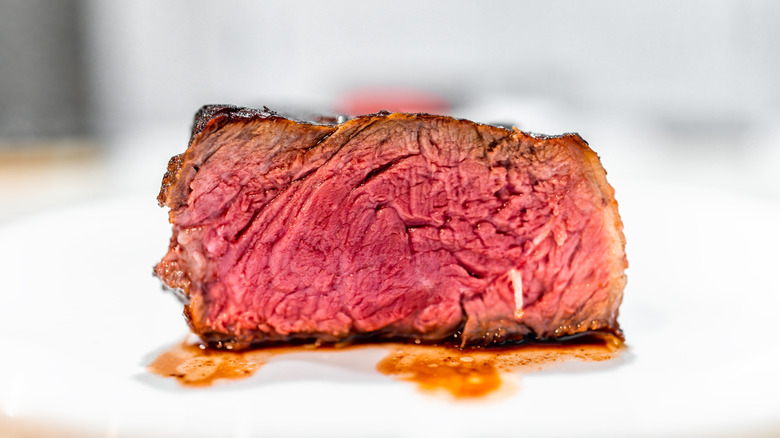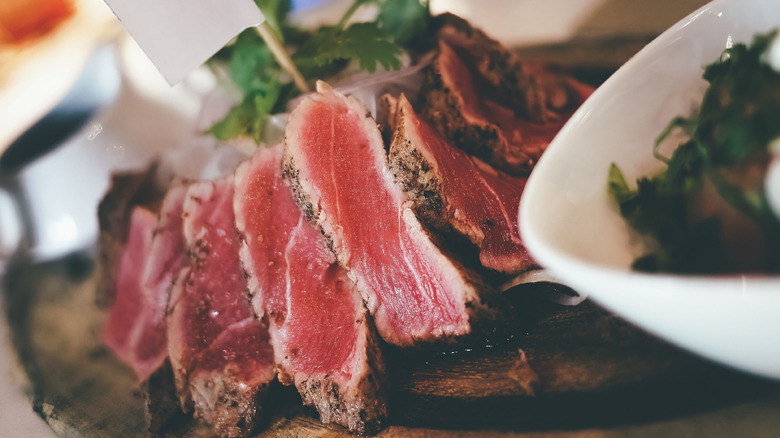The Absolute Best Cuts Of Beef For Blue Steak
When preparing steak, the internal doneness deservedly garners the focus. Just a few degrees distinguish the ideal temperature of rare, medium, or well-done steak; a quality that can make or break enjoyment. And not only does everyone have their own preference, but certain steaks shine better at a specific doneness.
So say you're looking to cook a blue steak, a seldom requested style that's less heated than rare. Involving just a touch of high heat at the exteriors, the interior isn't even warmed, which puts the cut's raw consistency front and center. As a result, you'll want a piece of beef that's naturally soft and juicy, even without heat involved. Avoid fatty, well-marbled options like ribeye or strip steak, as they need higher temperatures to melt into a flavorful, tender bite. And you certainly won't want a chewy steak cut like skirt steak; it'll be difficult to eat raw. You're after a lean piece of meat, absent of connective tissue and fat, yet still tender.
For such criteria, settle on steaks from the aptly named tenderloin, which are well-suited for raw enjoyment. Few cuts can rival the filet mignon, which comes especially lean and homogenous, although other tenderloin steaks would work, too. And you could also reach for the sirloin tip, which also packs in a delicious fat-free character that's enjoyable raw.
Source thick lean cuts and sear all sides for a delicious blue steak
This type of steak is cooked so little, the rare interior looks blue, which is what inspired the name. Subsequently, you may reasonably be worried regarding the safety of eating such a cut. As noted by Healthline, the brief preparation of blue steak isn't enough to alleviate potential illness-causing bacteria in the meat. Using fresh beef from a trusted source does minimize risks, but if raw enjoyment still feels unsettling, steer clear of this steak altogether.
Nevertheless, selecting the optimally shaped and textured beef cut does aid in blue steak safety and enjoyment. You'll want to sear your steak on all sides during preparation, ensuring a bit of delectable browning, while simultaneously sizzling away harmful surface contaminants. This comes easier with the butchering dimensions commonly employed for cuts from the tenderloin and sirloin tip. Conversely, while the top sirloin has the right lean consistency, its flatter nature complicates an all-around sear.
Furthermore, when inspecting your beef at the counter, go for the steak with no noticeable connective tissue. Tenderloin may contain some silver skin attached; ask for the butcher to remove it. And even small pieces of gristle make a big difference raw. The filet mignon dependably comes lean and pure, which is why it's such a great choice for blue steak. So look for cuts that emulate its all-red composition for the tastiest results.

